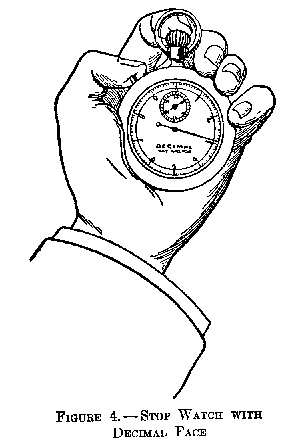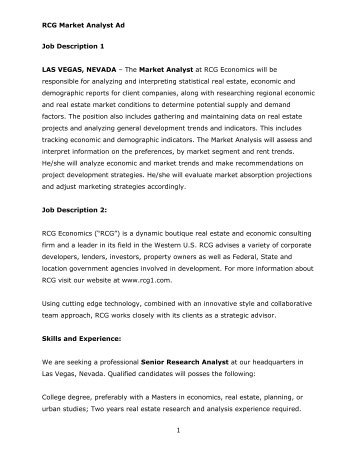Contents
We shall see the types of money available in the finance world, along with a short note on the Bharatiya Reserve Bank Note Mudran Private Limited . With the order, resumption of operations at cryptocurrency exchanges and backward linkages with the banking sector are expected. Implementing a CBDC can involve challenges such as the need for technical expertise, legal and regulatory issues, potential economic implications, and security concerns. Central banks and stakeholders must address these challenges to ensure the successful implementation of a CBDC.

Thus money facilitates the formation of capital markets and the work of financial intermediaries like Stock Exchange, Investment Trust and Banks. Money is the link which connects the values of today with those of the future. It has become possible because value of money is stable and it has general acceptability and durability. Money is the measuring rod, i.e., it is the unit in which the values of other goods and services are measured in terms of money and expressed accordingly.
It said that it intends to plan pilot launches of a central bank-backed digital currency or e-Rupee for specific use cases. Cryptocurrencies offer many advantages over fiat currencies, which is why they are becoming increasingly popular. However, it is important to remember that cryptocurrencies are still a new and emerging technology and therefore come with some risks.
Savings deposits of post offices are not a part of money supply because they do not serve as medium of exchange due to lack of cheque facility. Similarly, fixed deposits in commercial banks is not counted as money. M1and M2are known as narrow money whereas M3and M4are known gini index india as broad money. In practice, M3is widely used as measure of money supply which is also called aggregate monetary resources of the society. All the above four measures represent different degrees of liquidity, with M1being the most liquid and M4being the least liquid of all.

Absence of a common denominator in order to express exchange ratios create many difficulties. Money obviates these difficulties and acts as a convenient unit of value and account. As per RBI, the digital Rupee system will bolster India’s digital economy, enhance financial inclusion, and make the monetary and payment systems more efficient. Now there are lots of cryptocurrencies such as teslacoin that are providing lots of profitable trades to their traders.
CBDC, or Central Bank Digital Currency, is a digital form of fiat money that is issued and backed by a country’s central bank. Unlike cryptocurrencies, CBDC is centralized and regulated by the government, and is intended to function as a digital version of traditional fiat money. The use of CBDC is still in the early stages of development, but some countries are exploring the potential advantages and disadvantages of implementing such a system. The alternatives to fiat money are legal tender, barter exchange of precious metals like gold, and cryptocurrencies like bitcoins and ethereum. But these systems are not used by the governments as they are more complex for the common man and his mind.
Remember, search cost is the high cost of searching suitable persons to exchange goods and disutility of waiting refers to time period spent on searching the required person. This ultimately led to evolution of money as medium of exchange. CBDCs are digital version of government-backed, fiat money, which uses blockchain technology to verify and store transaction data. But the major difference is they operate on a centralised network, which is a permissioned network. Risks involved in cryptocurrencies are much lesser as compared to the risks involved in using fiat currencies. The fact that cryptocurrencies are decentralized and borderless makes them more efficient and trustworthy than fiat currencies.

An economy based on barter exchange (i.e., exchange of goods for goods) is called C.C. Economy, i.e., commodity for commodity exchange economy. In such an economy, a person gives his surplus goods and gets in return the goods he needs. For example, when a weaver gives cloth to the farmer in return for getting wheat from the farmer, this is called barter exchange.
Money acts as a medium of exchange or as a medium of payments. The use of money facilitates exchange, exchange promotes specialisation, specialisation increases productivity and efficiency. A good monetary system is, therefore, of immense utility to human society. Money is also called a bearer of options or generalised purchasing power because it provides freedom of choice to buy things he wants most from those who offer best bargain. ‘Direct exchange of goods against goods without use of money is called barter exchange’. Alternatively economic exchanges without the medium of money are referred to as barter exchanges.
Unlike cryptocurrencies, which are not regulated by a central authority, CBDCs are issued and controlled by the central bank. There has been a lot of buzz around the concept of cryptocurrencies, CBDC, and digital currencies. In layman’s terms, a CBDC is simply digital fiat, whereas cryptocurrencies are digital assets on a decentralised network. Fiat currency is the most widely accepted currency, with many currency exchanges and payment networks supporting it around the world. To put it another way, fiat money has no intrinsic worth and is determined by market forces. Because governments have control over the supply of money and fiat currency is not dependent on a volatile commodity, this aids in the stabilization of the country’s economy.
Meanwhile, a large part of it is also controlled by the faith of its holders i.e. we the people. Fiat money will lose its value if people lose faith in it. The first conversation rate was announced by the Brenton Woods Agreement that stated one troy ounce of gold is equal to 35 USD.
Moreover, the transparency offered by blockchain technology enhances the security of cryptocurrencies. These features make cryptocurrencies a better option for transactions than fiat currencies. Another reason why the cryptocurrency is often seen as being superior to fiat currency is that it is much more efficient and cost-effective to use. Transaction fees for cryptocurrencies are typically very low, and they can be processed very quickly. In contrast, traditional fiat currencies can often be quite slow and expensive to process transactions with. CBDCs are digital currencies issued and backed by a country’s central bank.
For one, they are more secure, as they are based on cryptography and blockchain technology. This makes them much more difficult to hack or counterfeit. All token coins and paper notes that can be readily converted into full-bodied coins or equivalent bullion (gold, silver, etc.) at a fixed rate, are known as representative money.
People have to accept it in exchange for goods and services and in discharge of debt as the government has ordered it to be money. It is also called legal tender as it circulates in the country on the fiat (i.e., command) of the government. Fiat money is generally created and issued by the government at the time of crisis like war or emergency.
The country was saddled with huge debts and economic sanctions following its World War I defeat, which the government tried to pay through the mass printing of banknotes. By November, 1923, $1 was worth 4,210,500,000,000 marks. Cryptocurrencies, on the other hand, are private and operate independently of governments.
And unlike traditional fiat currencies, cryptocurrencies are not controlled by governments or banks. This makes them more democratic and gives users more control over their money. There are lots of cryptocurrencies such as the yuan in which you can invest and gain profit. Nilixa is the founder of Payments Solved, a regulatory consultancy advising on the regulatory framework for crypto assets, CBDC, payment services and open banking both in the UK and globally.
Most of the loans extended by the banks to the individuals and/ or businesses are usually held by them in the form of bank deposits. Bank deposits that can be withdrawn through cheques are generally known as bank money. Examples of fiduciary money are bank notes, drafts, cheques. The real value of fiat money is not equal to its face value. The significant thing about commodity money is that its value is described by the actual value of the commodity itself. It is the easiest, most likely, and the oldest type of money.
You can sell goods for money to whoever wants it and with this money you can buy goods from whoever wants to sell them. People exchange goods and services through medium of money when they buy goods or sell products. Thus money acts as intermediary which solves barter’s problem of lack of double coincidence of wants. There are many benefits of cryptocurrencies, including their decentralization, immutability, and security. Cryptocurrencies are also often cheaper and faster to send than traditional fiat currencies.
CBDCs can provide a safe, secure, and convenient way to store and use money digitally. They can also promote financial stability, inclusion, and efficiency. Additionally, because they are issued and backed by a central bank, they are subject to the same level of oversight and regulation as other forms of central bank money. The purpose of a CBDC is to provide the general public with a safe, secure, and convenient way to store and use money digitally. This can help to reduce reliance on physical cash, which can be inconvenient and risky to use and can also provide a more efficient and stable means of conducting financial transactions.
Examples of CBDCs include the Digital Yuan, Digital Dollar, and Digital Euro. These are still in development and testing, and it is not yet clear when they will be available for public use. CBDCs are similar to existing digital https://1investing.in/ payment methods in that they allow for the transfer of money between accounts digitally. However, unlike traditional digital payments, CBDCs would not need to pass through multiple banks, which can take several business days.
A medium of exchange that is centralized, generally accepted, recognized, and facilitates transactions of goods and services, is known as money. Another meaning of hard money is the loan that is secured with property. When the borrower doesn’t have a good Credit Score, they turn to the private moneylender to obtain a loan by using their property as Collateral. This loan carries a high-interest rate since the moneylender has to bear a high level of risk. Borrowers who need a loan for the urgent financial requirements opt for a hard money loan.
He’s a keen learner with strong academics and a passion for co-curricular activities. He wishes to up-skill himself in the broad domain of finance and business management. In around 1000 AD, the Sichuan region in China saw a boom in business, which again resulted in shortage of metallic coins.







No Comments: